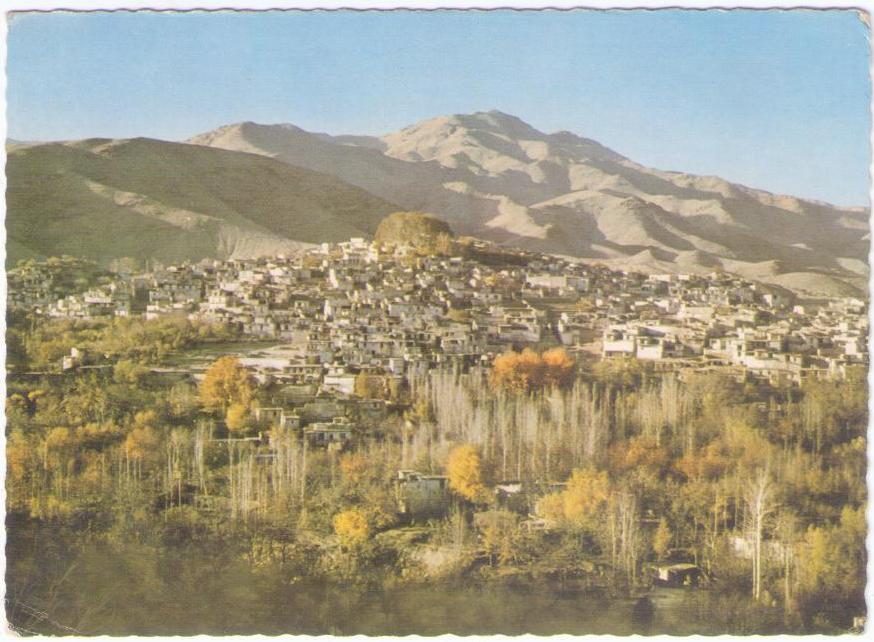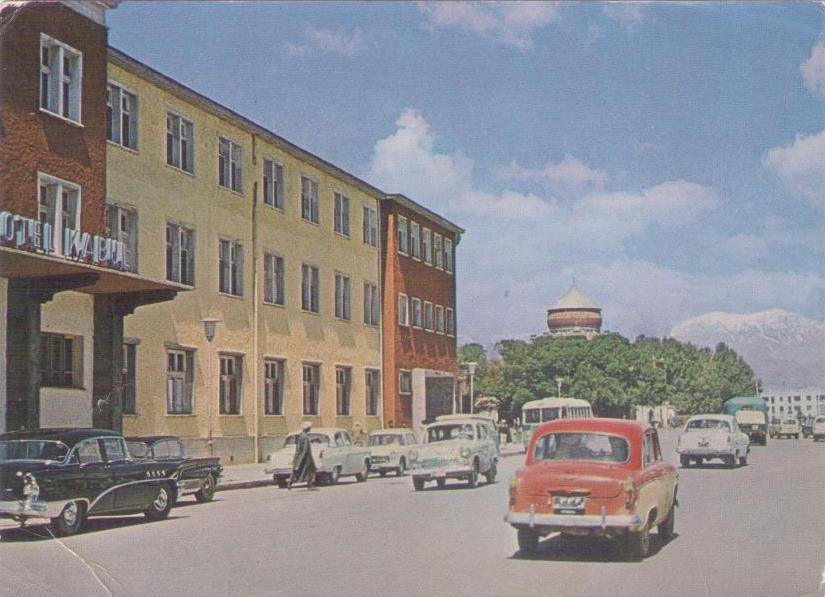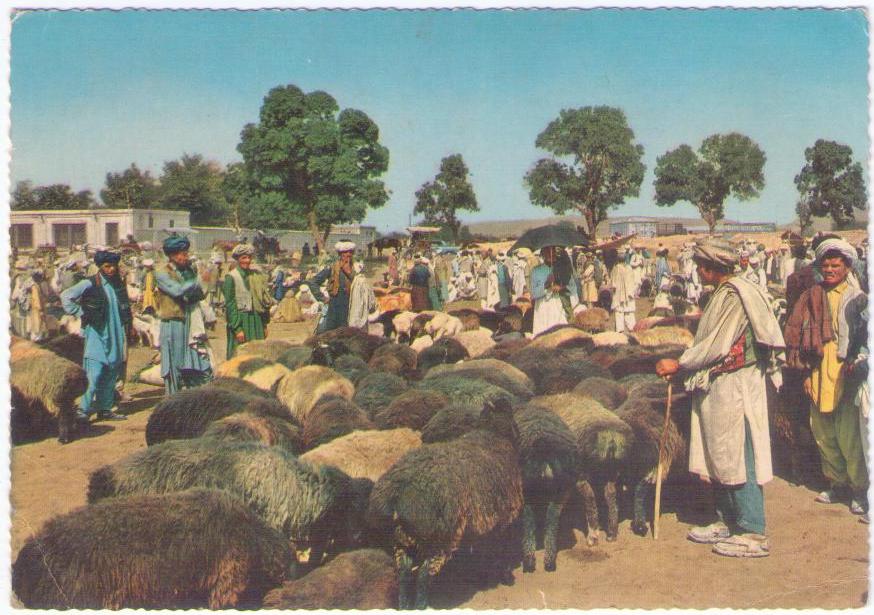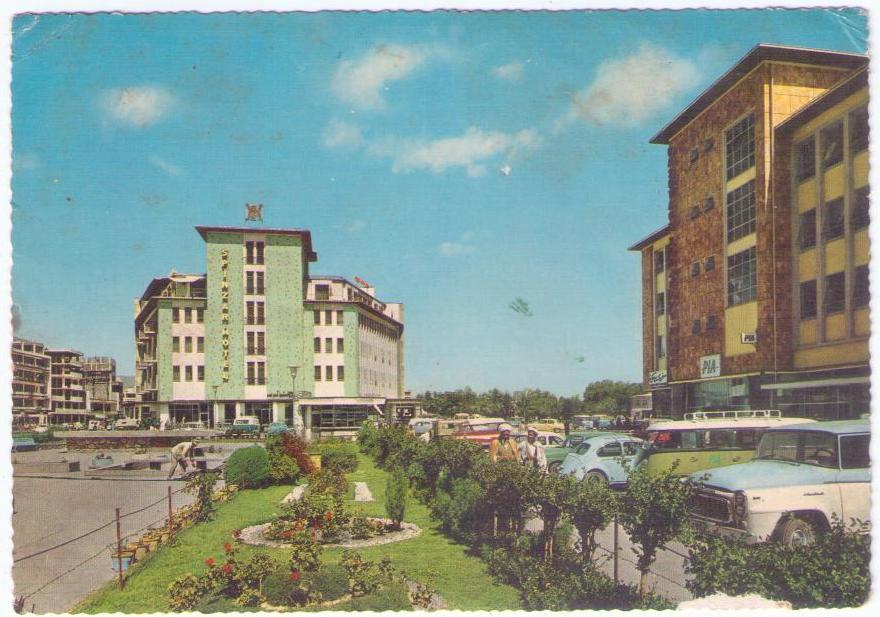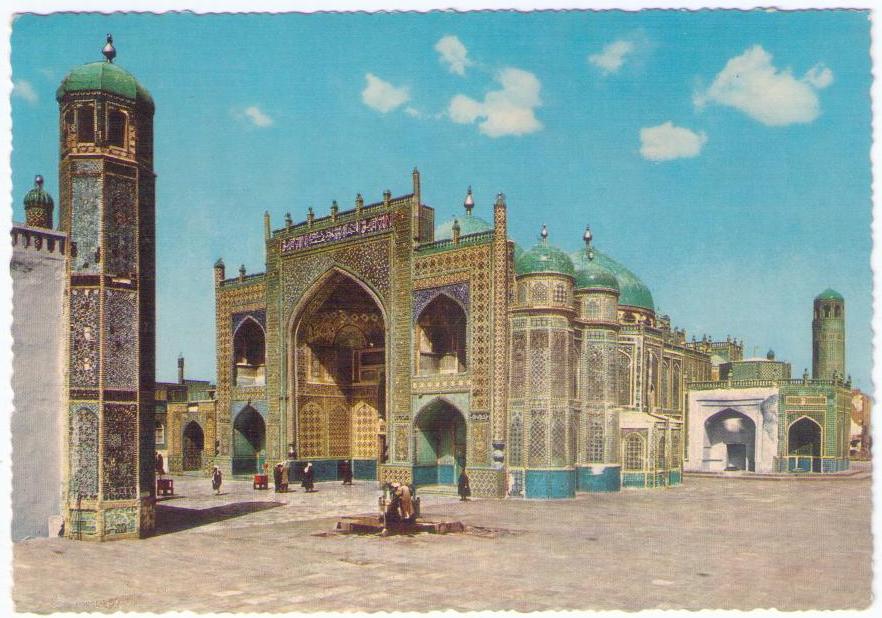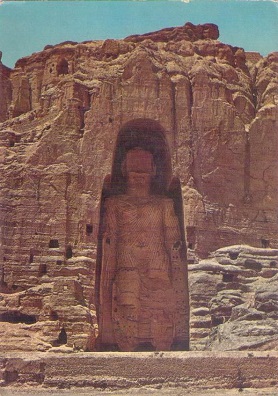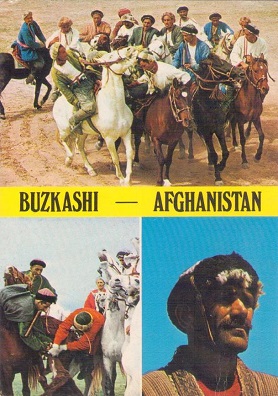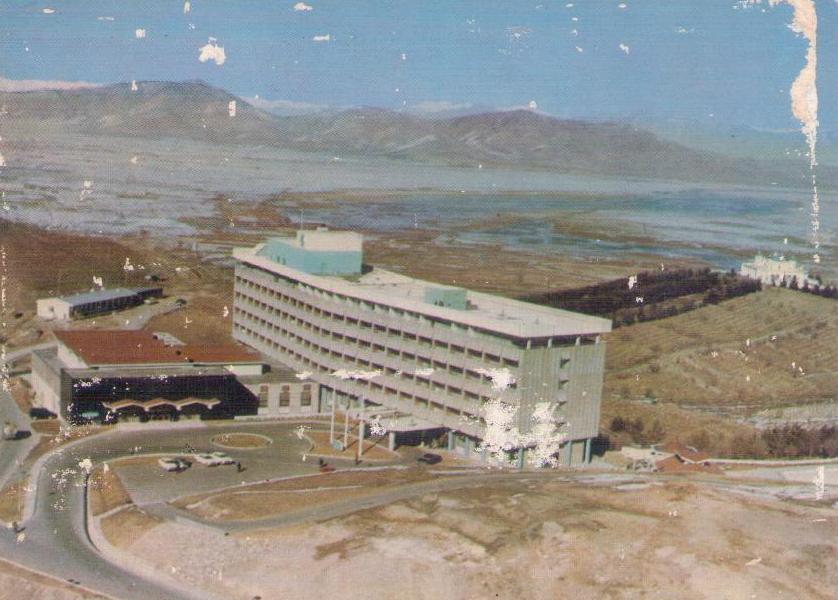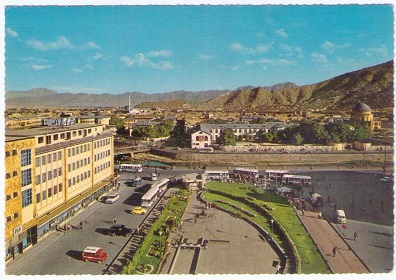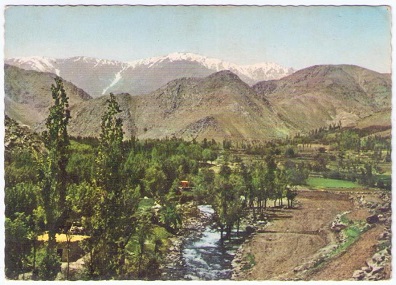-
Istalif
Wikipedia offers this laconic description: “Istālif (Persian: استالف) is a village 29 kilometres northwest of Kabul, at an elevation of 1,693 metres. The village was destroyed during the long-lasting wars around Kabul. There are a few repaired or newly constructed buildings. The village needs a lot of work to be done to return its previous state. Istalif is famous for its handmade glazed potteries. Its name might derive from Greek staphile (“bunch of grapes”) or Parachi estuf (“cow-parsnip”). Istalif was always renowned as one of the most beautiful places in Afghanistan – the Emperor Babur fell in love with it in the 16th century and used to hold parties in his rose garden and summer house there.” But here’s the Afghanistan postcard, unused, serrated edges, heavily aged but clean. Grade: 2
-
Kabul, Ibnisina Street, Hotel Kabul
Mailed in 1968, with stamp and Kabul postmark, a view of an older day. We couldn’t find anything about the hotel online. Most likely, it’s gone, or at the least, changed its name. Grade: 2
-
Kabul, Stockyard
Extremely heavily aged but otherwise unwritten Kruger card 1505/10, serrated edges. Grade: 3
-
Greetings from Bamyan, Statue of Buddha
You’ll likely be familiar with the recent history already. Not postally used, this card has a name and address written on the back. One statue was 53m, the other 35m in height. Grade: 4
-
Kabul, Spinzer (sic) Hotel
It seems like this hotel may still be there, though the name generally appears online as Spinzar. In any event, the unused card is OK on the front but extremely heavily aged on the back, and has serrated edges. Grade: 4
-
Mazar-E-Sharif
Unused card, serrated edges, and quite a bit aged but clean on the reverse. As for the locale, Wikipedia is informative and includes this: “Mazar-e Sharif means “Noble Shrine”, a reference to the large, blue-tiled sanctuary and mosque in the center of the city known as the Shrine of Hazrat Ali or the Blue Mosque. Some Muslims believe that the tomb of Ali ibn Abi Talib, the cousin and son-in-law of the Islamic prophet Muhammad, is at this mosque. However, most Muslims believe that the grave of Ali is at the Imam Ali Mosque in Najaf, Iraq.” We don’t know about that, but here’s the card. Grade: 3
-
Bamiyan, The Great Buddah (sic)
Unused card, very heavily mottled (foxed) with age on the reverse. Grade: 4
-
Spozhmai Cafe Karga Dam
The problem common to many transliterations is in getting a consistent spelling. Let’s just introduce “Qargha” as an alternative to Karga. The postcard: old, very heavily aged, unused, serrated edges, from Hamidzadah Stores. Grade: 3-
-
Buzkashi
The unused old postcard makes this look like the name of a city, but no, it is (or was) a national sport. Wikipedia tells us: “Buzkashi (literally “goat grabbing” in Persian), also known as kokpar, kupkari and ulak tartysh, is the Central Asian sport in which horse-mounted players attempt to place a goat or calf carcass in a goal. It is the national sport of Afghanistan, although it was banned under the Taliban regime.” Perhaps it will be banned again. The card is age-mottled. Grade: 2
-
Kabul, Hotel Inter-Continental
As you can see in the scan, a beaten-up old (unused) card of an older hotel that after so many problems is somehow still there and doing its job. Or it was, a the time of this writing. Online reviews are instructive. Grade: 4
-
Kabul, Mohd. Jan Khan Watt
Old Kabul postcard, extremely heavily aged on the reverse, and with serrated edges. Otherwise clean. Grade: 3
-
Paghmantal
Not postally used, but in 1977 someone wrote a long message (and address) on the back. Serrated edges. Grade: 4
-
Seven Beauties (A. Navoi)
Captioned in Russian (mostly) and English, the English portion states: ‘Seven Beauties’ excerpt from the poem by A. Navoi”. This unmailed postcard (someone wrote “Azerbaijan” on the top reverse, but we doubt that) was published in Tashkent in 1972. However in our search to learn about A. Navoi and those Seven Beauties, we wound up with this from Wikipedia: “‘Ali-Shir Nava’i (9 February 1441 – 3 January 1501), also known as Nizām-al-Din ʿAli-Shir Herawī (Chagatai: نظام الدین علی شیر نوایی, Persian: نظامالدین علیشیر نوایی) was a Timurid poet, writer, statesman, linguist, Hanafi Maturidi mystic and painter who was the greatest representative of Chagatai literature.” This did not help us at all, but we went on to learn he was born in Afghanistan, so that’s where we put the card. We’ve no idea of the true setting of the photograph. Maybe Tashkent. Grade: 2

